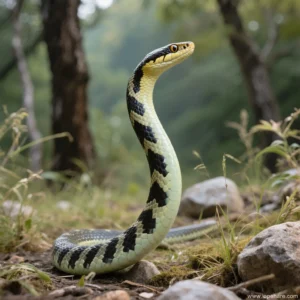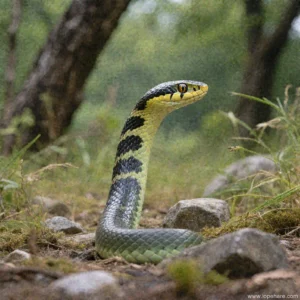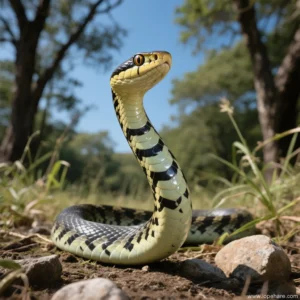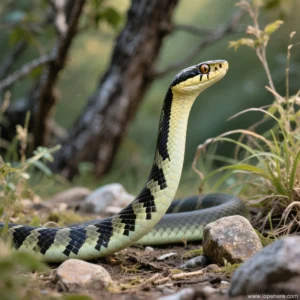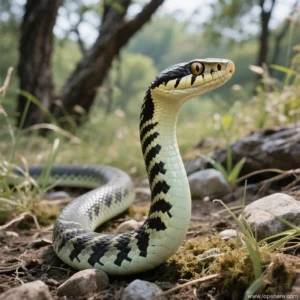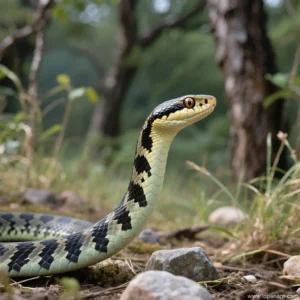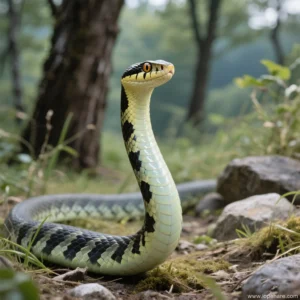Can Elaphe schrenckii Live with Other Pets? Safety Tips for Multi-Pet Households
As dedicated advocates for responsible pet ownership, particularly in the often-misunderstood world of small and exotic animals here at lopehare.com, we frequently encounter questions about integrating diverse species into a single household. One such question that arises is regarding the beautiful and increasingly popular Schrenck’s ratsnake, also known as the Amur ratsnake (Elaphe schrenckii).</ Can this stunning constrictor coexist safely within a multi-pet household alongside traditional companions like dogs and cats, or even other exotic species? The answer, while potentially yes, requires careful planning, diligent management, and a deep understanding of each animal's needs and instincts.
Understanding Elaphe schrenckii
Before even considering introducing any other animal into their environment (or vice-versa), it’s crucial to understand the nature of the Amur ratsnake itself. Elaphe schrenckii care involves understanding they are non-venomous constrictors native to Northeast Asia. They are known for their generally docile temperament in captivity, striking black and yellow/white banding, and impressive size, often reaching 5-6 feet in length, sometimes more. While they are not typically aggressive towards humans when properly handled, they are predators with a strong feeding response and a natural prey drive.
Prey Drive & Compatibility Factors
This inherent prey drive is the primary reason why mixing Elaphe schrenckii with other animals is fraught with risk. Anything perceived as potential food could trigger a strike. This includes small mammals (like hamsters, gerbils, mice – even if they are feeder animals, the snake doesn’t differentiate based on your intent), birds, and potentially even smaller reptiles. Size is a significant factor; a large ratsnake could potentially overpower and constrict a small pet.
Compatibility isn’t just about the snake potentially harming other pets. It’s equally, if not more, about other pets harming the snake. Dogs and cats, with their natural hunting instincts, can see a snake (especially one moving or escaping) as prey or a threat. A playful swat or bite from a dog or cat can cause serious injury or death to a snake, even a relatively large one like a Schrenck’s ratsnake. Birds of prey also pose a significant threat if given access.
Furthermore, the presence of other pets can cause significant stress to the snake, leading to health issues, appetite loss, and behavioral problems. Conversely, the presence of a large snake, even securely caged, can be a source of stress for prey animals in the household.
Living with Different Pet Types
Dogs
Mixing snakes and dogs requires extreme caution. Even the most well-trained dog can react unpredictably to the sight, smell, or movement of a snake. Curiosity can quickly turn into a dangerous situation for the snake. Secure containment of the snake is non-negotiable, and dog access to the snake’s enclosure area must be strictly managed.
Cats
Cats’ strong predatory instincts and agility make them perhaps even more dangerous to snakes than dogs. A cat can often reach places dogs cannot and may persistently attempt to interact with an enclosure, potentially stressing the snake or even managing to breach a less-than-perfect setup. Again, secure, inaccessible housing for the snake is paramount.
Birds
Birds, especially smaller species, fall squarely into the potential prey category for a ratsnake. Keeping them in the same room or area is highly discouraged due to the stress it can cause both animals and the extreme risk should the snake ever gain access to the bird’s enclosure or vice versa.
Other Reptiles & Small Mammals
Cohabitation between snake species is generally not recommended unless you are an experienced breeder knowledgeable about specific species compatibility (which is rare and often involves significant risk). Different species have different needs regarding temperature, humidity, and space, making cohabitation difficult to manage correctly. Furthermore, cannibalism is a risk among snakes, and inter-species predation is also possible. Small mammals like rodents, rabbits, or guinea pigs are direct prey for Schrenck’s ratsnakes and should never have any possibility of interacting.
Never Allow Direct Interaction: We cannot emphasize this enough. Schrenck’s ratsnakes and other pets should never be allowed to interact directly, regardless of perceived temperament or size difference. Accidents happen in seconds.
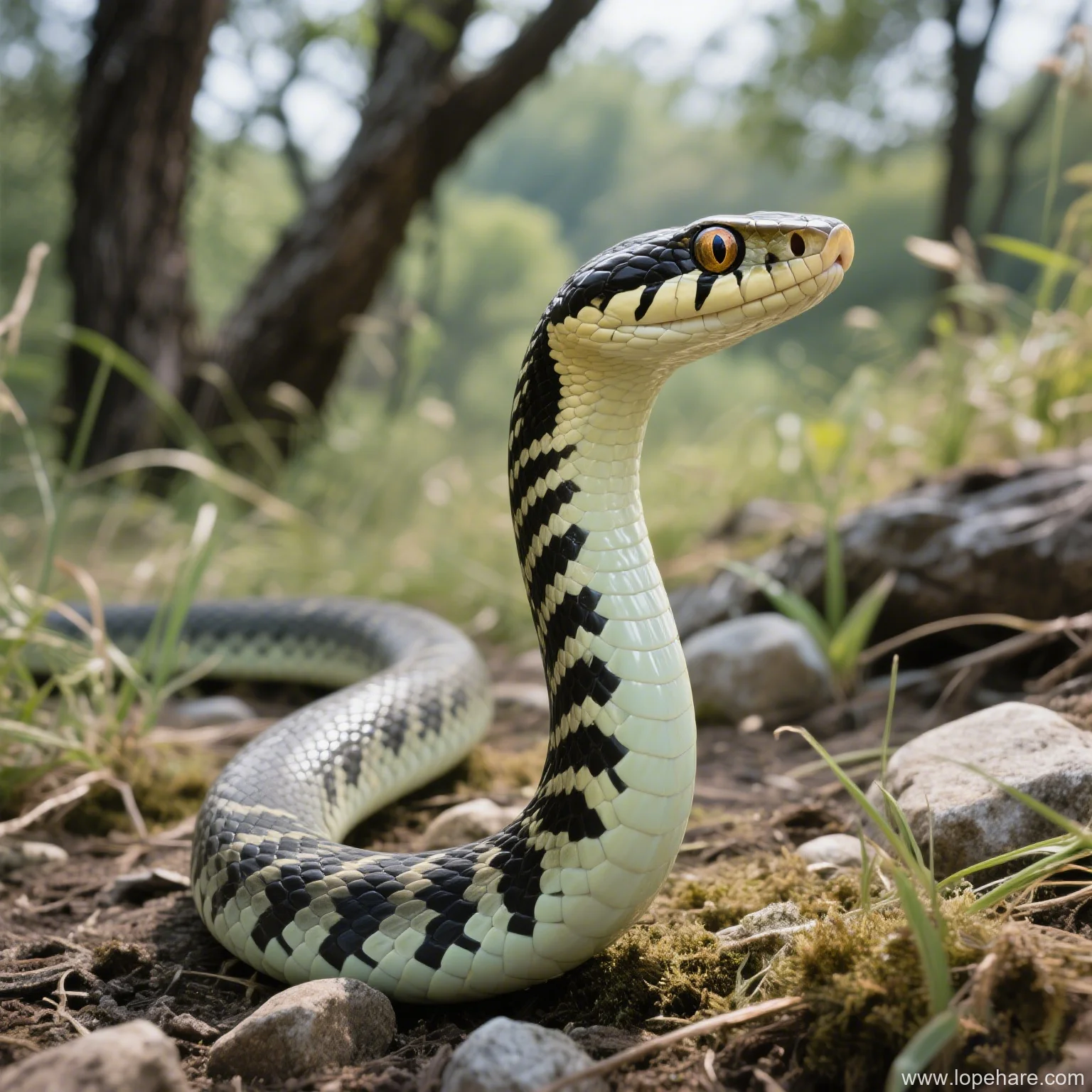
Safety Tips for Multi-Pet Households
If you are committed to keeping a Schrenck’s ratsnake in a home with other pets, here are essential safety tips from our experience at lopehare.com:
Secure Enclosure is Paramount
This is the single most critical factor when integrating Schrenck’s ratsnake into a home with existing pets. The snake’s enclosure must be escape-proof. This means sturdy construction, a lid that latches securely (preferably with a lock), and no gaps the snake can squeeze through. It also needs to be robust enough that curious paws or noses from other pets cannot damage it or gain access. Housing the snake in a room that other pets cannot access unsupervised is highly recommended.
Strict Supervision & Interaction
Any time the snake is outside its enclosure for handling or enclosure maintenance, all other pets must be secured in a different room. There should be no chance of an accidental encounter. Even if the other pets are used to the snake’s presence (from inside the cage), seeing it outside can trigger their predatory instincts.
Hygiene and Disease Prevention
Maintaining excellent hygiene is important in any multi-pet household, but especially when housing reptiles with mammals or birds. Always wash your hands thoroughly before and after handling your snake or working in its enclosure. This minimizes the risk of transmitting pathogens like Salmonella, which reptiles can carry, to other pets or humans. Similarly, maintain clean conditions for all pets.
Consider the Stress Factor: Even with perfect physical separation, the mere presence (sight, sound, smell) of predator and prey species in the same home can cause chronic stress. Be observant of all your pets’ behaviors and signs of stress.

Managing Stress for Both Parties
Ensure the snake’s enclosure is in a quiet area away from the main traffic flow of other pets. Using opaque hides within the enclosure allows the snake to feel secure and retreat from view if it perceives other animals (or just general household activity) as stressful. Provide ample hiding spots for prey animals elsewhere in the house if applicable.
Successfully keeping Elaphe schrenckii safely alongside dogs and cats or other pets hinges entirely on preventing any possibility of interaction, accidental or otherwise. It requires constant vigilance and a commitment to prioritizing the safety and well-being of all animals involved.
Conclusion: Can It Be Done?
Yes, it is possible to keep an Elaphe schrenckii in a multi-pet household, but it is by no means simple or without risk. It demands a dedicated owner who understands the inherent risks associated with housing predator and potential prey animals under the same roof. This is not a scenario for novice snake keepers or those who cannot guarantee strict separation and supervision at all times. The primary responsibility lies with the human owner to implement rigorous safety protocols, ensuring secure housing and preventing any direct contact between the snake and other pets. By focusing on prevention, education, and secure environments, responsible owners can minimize the significant risks involved.
References
- Wikipedia: Elaphe schrenckii
- Integrated Taxonomic Information System (ITIS): Elaphe schrenckii
